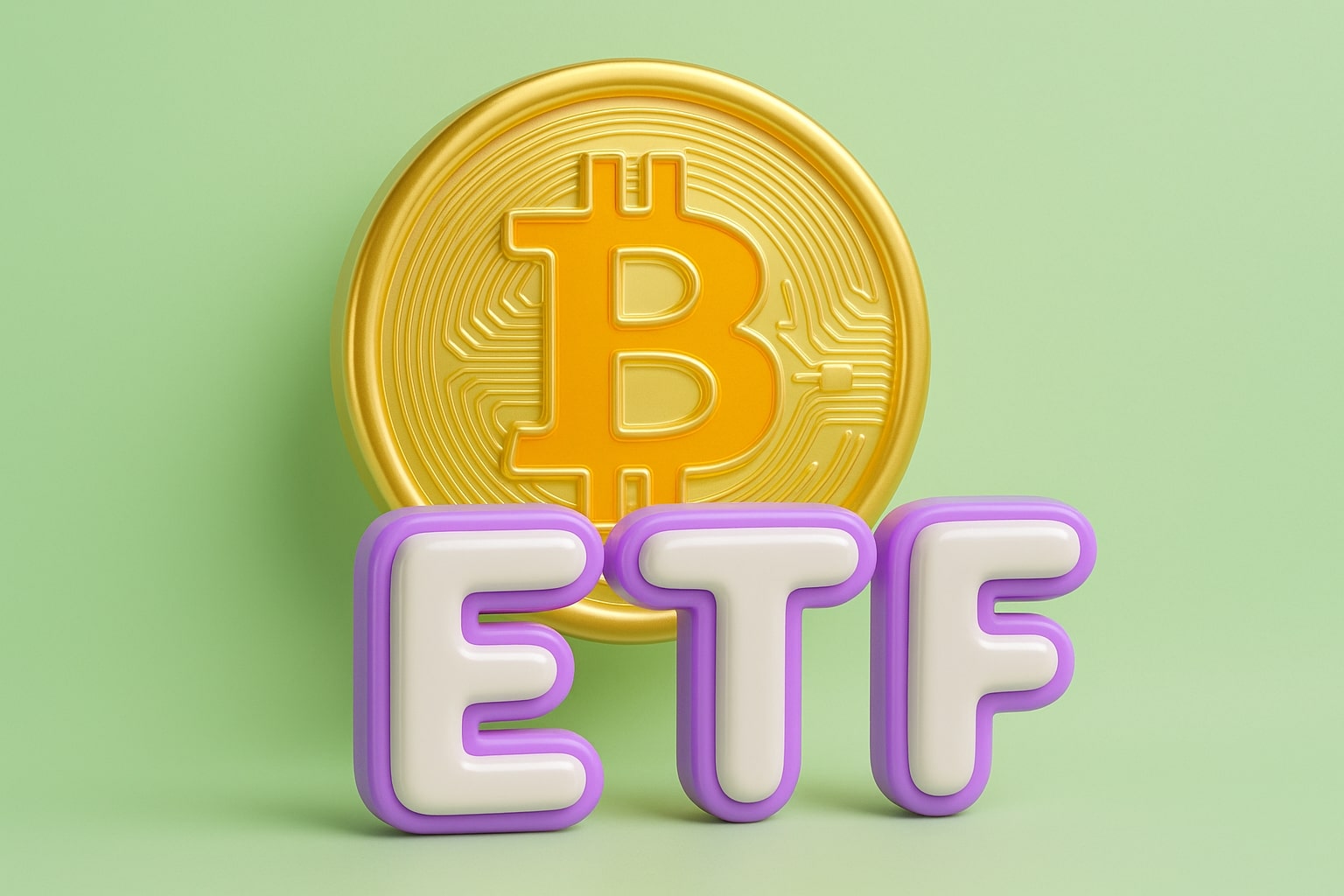
VOO ETF (NYSEARCA:VOO) Climbs to $496.27 as $38B Fund Inflows and 8.4% Earnings Growth Propel S&P 500 Toward 7,064 Target
With Q3 corporate revenues up 8.4%, GDP growth at 4.2%, and fund-manager cash levels at a 15-year low of 3.7%, VOO leads the 2025 rally | That's TradingNEWS
NYSEARCA:VOO Strengthens Toward $496 as S&P 500 Earnings Expand 8.4% and Fund Flows Signal Record Bullish Momentum
The Vanguard S&P 500 ETF (NYSEARCA:VOO) trades near $496.27, gaining 17% year-to-date as U.S. equity strength continues to dominate global markets. VOO’s trajectory reflects the combined force of robust earnings growth, historically low fund-manager cash levels, and continuous inflows into index-tracking vehicles. Corporate revenues within the S&P 500 rose 8.4% in Q3 2025, the largest increase since 2022, while margins stabilized above 11.3%, confirming that price expansion is being driven by results rather than speculative narratives. According to FactSet aggregate data, over 80% of S&P 500 constituents beat EPS estimates, reinforcing fundamentals behind VOO’s advance toward all-time highs. Despite record valuations, investor sentiment remains cautious — a contrarian indicator that often supports extended upside during late-year rallies.
Liquidity Expansion and Seasonal Flows Reinforce the Bullish Structure
Data from LSEG Lipper and Bloomberg show that U.S. stock funds received consistent inflows across November, totaling nearly $38 billion, with ETFs like VOO and SPY absorbing over 60% of that volume. Historically, December delivers the strongest inflow period of the year — a pattern visible across the past 15 seasonal cycles. Fund managers’ cash holdings dropped to 3.7%, their lowest point in 15 years, confirming full allocation toward risk assets. This combination of positioning and liquidity injection supports the thesis of a continuation in S&P 500 strength into the end of 2025. The Atlanta Fed’s GDPNow model projects 4.2% U.S. GDP growth for Q4, further cementing the macro foundation for large-cap ETFs.
Comparative Performance: VOO vs. IDEV and the Dollar Dynamic
While iShares Core MSCI International Developed Markets ETF (IDEV) has gained roughly 28% YTD, VOO’s 17% return underscores relative resilience despite a strong dollar and concentrated U.S. tech exposure. IDEV’s outperformance is primarily currency-driven, as dollar softness inflated overseas equity valuations. However, VOO’s earnings base remains structurally superior — supported by the 2.1% U.S. GDP growth forecast for 2026, compared to IDEV’s blended 1.25% growth across developed economies. The valuation spread between the two ETFs remains wide: VOO trades at 28.0x trailing earnings versus IDEV’s 18.5x, reflecting the premium investors assign to U.S. profitability and innovation leadership. This gap implies that for IDEV to maintain relative performance, global GDP growth must accelerate or the dollar must weaken significantly.
Sector Leadership Concentration Defines VOO’s Performance Pattern
Sector allocation continues to drive index skew. Information Technology accounts for 36.1% of VOO’s weighting, followed by Health Care (9%), Financials (12.9%), and Communication Services (10.1%). The top ten holdings, including Apple, Microsoft, Amazon, Nvidia, and Meta, collectively represent 39.65% of the ETF’s total assets. While this concentration heightens risk exposure to mega-cap corrections, it also consolidates earnings power, as the tech cohort alone contributed over 65% of total index profit growth this year. Earnings from semiconductor, cloud, and AI infrastructure companies remain the principal catalysts for maintaining the S&P 500 above 5,100 points, with projections of 7,064 by year-end — a 4.9% additional upside if historical December seasonality persists.
AI and Macro Crosscurrents: Between Fear and Growth Acceleration
Search data indicate record spikes in “AI bubble” queries, yet investment behavior contradicts the narrative. Managers continue deploying capital aggressively into AI-heavy portfolios, evidenced by VOO’s sustained inflows and the decline in cash ratios. Credit default swaps on large-cap tech names such as Oracle and Nvidia widened during July, signaling localized hedging rather than systemic risk. Meanwhile, unemployment among degree-holding Americans reached cycle highs, but aggregate labor-market data remain consistent with expansion, not contraction. Combined with 3% inflation, 4.2% GDP growth, and easing expectations for Fed policy, macro data confirm cyclical support for equities rather than fragility.
Global Divergences Reinforce U.S. Equity Attractiveness
Japan’s $135.5 billion stimulus and volatile bond market underscore why U.S. equities remain the global anchor. Rising Japanese yields and a weakening yen have drawn foreign capital toward dollar-denominated ETFs like VOO and IVV, reinforcing dollar asset demand. With U.S. yields stabilizing near 4.25% on the 10-year Treasury, global investors favor S&P 500 exposure for defensive diversification. The domestic composition of U.S. debt and consistent consumer demand mitigate systemic risk that plagues other developed markets. As a result, the VOO ETF continues to absorb cross-border inflows while maintaining $1.02 trillion in AUM, solidifying its dominance among passive investment vehicles.
Valuation Perspective and Forward Returns Outlook
At $496.27, VOO’s implied earnings yield stands at 3.57%, nearly 200 basis points above 2-year Treasury yields when adjusted for inflation. This suggests limited downside risk as long as corporate profit margins remain above 10%. Forward P/E at 21.9x is justified by expected EPS growth of 7.4% in 2026. Quantitative models project a total return between 8–11% annually under stable rates and moderate inflation scenarios. Even if multiple compression occurs due to stronger GDP outside the U.S., VOO’s structural cost advantage (expense ratio 0.03%) ensures it remains the benchmark vehicle for equity allocation.
Read More
-
IREN Stock Price Forecast - IREN’s $9.7 B Microsoft Contract Redefines Its Future
28.11.2025 · TradingNEWS ArchiveStocks
-
XRPI and XRPR ETFs Ignite $643.9M Inflows as XRP Supply Shrinks and Price Targets Shift Toward $3.80
28.11.2025 · TradingNEWS ArchiveCrypto
-
Natural Gas Price (NG=F) Rallies 6.4% to $4.85 on Cold U.S. Weather — Eyes on $5.25 Resistance
28.11.2025 · TradingNEWS ArchiveCommodities
-
Stock Market Today - Wall Street Rises as Dow Jones (^DJI) Climbs to 47,730, S&P 500 (^GSPC) at 6,842, and Nasdaq (^IXIC) Rebounds After CME Outage
28.11.2025 · TradingNEWS ArchiveMarkets
-
USD/JPY Price Forecast - (FX:USDJPY) Stabilizes Near 156.20 as Tokyo CPI at 2.7% Fuels BoJ Hawkish Shift
28.11.2025 · TradingNEWS ArchiveForex
Breadth Narrowing and Market Rotation Risk
While index-level performance is robust, breadth remains historically thin — only 158 of 500 S&P components are outperforming the benchmark. This marks the third lowest participation level since 1960, suggesting fragility beneath the surface. However, cyclicals and small caps are beginning to reassert leadership, particularly in financials and industrials. If breadth improves, VOO could extend toward $510–$525 in Q1 2026, aligning with S&P 500’s 7,064-point target. Conversely, a rotation out of AI mega-caps could trigger temporary pullbacks to $475–$480, which would likely be used by institutions as accumulation zones.
Comparative Allocation Metrics and Risk Dynamics
VOO’s dividend yield of 1.36%, distributed quarterly, remains competitive given its consistency. The ETF’s beta of 1.00 and volatility of 13.7% position it as a balanced exposure tool relative to SPY (14.5%) and IVV (13.9%). Its 39.65% concentration in the top 10 names is offset by a low tracking error of 0.02%, making it ideal for long-term investors seeking precision in index replication. When compared with IDEV’s 2.79% yield and higher currency risk, VOO remains structurally safer, though less attractive on valuation metrics.
Sentiment, Flows, and Final Market Structure Implications
Despite new highs, sentiment indices such as CNN’s Fear & Greed remain in the “fear” zone at 41/100, indicating that investors remain underexposed. This contrarian environment historically favors continuation rallies — aligning with seasonal strength and positive fund flow trends. The cumulative evidence — from GDP acceleration and record earnings to consistent ETF inflows — supports sustained upside potential for VOO (NYSEARCA:VOO) into 2026.
Verdict: BUY (NYSEARCA:VOO) — Earnings Momentum, Liquidity Tailwinds, and Valuation Stability Justify Exposure
Based on trailing 8.4% corporate revenue growth, 4.2% GDP trajectory, $38B inflows, and an S&P 500 year-end target of 7,064, VOO remains a BUY. The ETF’s fundamental support base, cost efficiency, and liquidity dominance reinforce its role as the central equity allocation instrument for institutions navigating an environment of disinflation, monetary easing, and structural tech leadership.



















